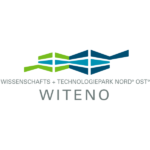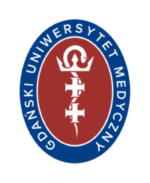Optimized use of Biological Ressources
In summary, there is optimistic news on all three corner stones of the Bioeconomy: Biorefinery feed stock availability, value chain potentials, and realistic, within reach process and product development. This opens for the bioeconomy to take off, hereby providing basis for generation of jobs, increased resource efficiency, and regional and rural development.
By Lene Lange, Professor and Research Director, Aalborg University, Denmark

There is significantly more biological feed stock available for sustainable conversion in Biorefineries than what has been accounted for previously: Biological materials available for upgrade go far beyond straw, stover and wood chips. There are significant amounts also in Europe of Bioindustrial “waste” streams (from e.g. paper and textile mills and not the least from the food processing industries); of waste from the food value chain (food waste, discarded bread, out dated packaged food, feed and pet food); of household waste; and of sludge from waste water treatment. On top of this are also the untapped potentials of the marine biomass and the sea food waste; and the ample possibilities of using the green crop residues from grass on marginal land (taking away surplus of biomass as environmental service to restore the floral biodiversity on marginal land), cutting the aerial part of the after crops, and use also the park and gardening biomaterials. All the mentioned biological materials can be upgraded in Biorefinery processing without endangering the soil quality or the biodiversity. However, attention must constantly be given to ensure that the soil quality, fertility and structure, is not downgraded through increased demand for additional biological feedstock.
Bioconversion of biomass can provide basis for more value chains than just bioenergy. Production of heat and electricity from bioresources are placed in the very bottom of the Value Pyramid (Fig.1). Alternatively, biomass can provide basis for three value chains further up the value pyramid: The cellulose fibers can be enzymatically broken down to glucose, establishing a sugar platform, which can be used to feed microorganisms, specialized in production of e.g. biofuel, biochemical building blocks, or bioplastics. The hemi-cellulose fraction of the biomass, almost as big as the cellulose fraction, consists of highly diverse polymers of a variety of different types of sugars, together forming a complex branched molecular structure. This, nature´s own complexity, can be modified into biologically active oligomers with potentials for being used as healthy feed and food ingredients. Such special sugar oligoes can act as feed for the healthy microbial gut flora in both man and animal, competing out the unhealthy (pathogenic) microbes. The last of the three major components, the lignin fraction, is composed of polyphenolics. Right now a cascade of new uses of lignin is on the drawing board. Among the most promising are carbon fibers (e.g. for car manufacturing) and binders.
There will be need for several types of Biorefineries, big and small, here described in color code manner:
The Yellow Biorefinery (straw, corn stover and wood chips)
The Green Biorefinery (fresh green leaves)
The Grey Biorefinery (from sludge)
The Blue Biorefinery (marine, seafood waste & algae)
The White Biorefinery (agroindustrial waste-both plant and animal based)
Each of these types of Biorefineries will need specialized pretreatment and microbial conversion processes. And each of the feed stocks, handled in the various types of Biorefineries provides basis for development of a range of different value adding products. From the top to the bottom of the value pyramid (Fig.1). The lowest value comes from combustion into electricity and heat. This is what most biomass in Europe is currently being used for. There is ample room for improved value, jobs and development!
The many types of Biorefineries, expected to be established in a not too distant future, build a demand for a cascade of new enzymes to be used for decomposing the many types of biological materials. Fortunately, the new genomics era has established a wealth of accessible genome data, giving a huge melting pot for fishing out the microbial enzymes we need. To create some order out of the chaos of data, so we know how to fish out just the right enzymes for the various purposes, we have recently developed an entirely new approach to sequence analysis, predicting function from sequence; and establishing the “fishing rod” for fishing just the enzymatic function you need (Busk & Lange, 2013).

Nature´s biomass conversion:
Nature´s biomass conversion has many hot spots: the rumen of the cow, the gut channel of the termite larvae, the fungal garden kept deep down in the nest of leaf cutter ants, manmade composting, and not the least in soil where organic matter (primarily plant cell wall materials, called lignocellulose) turn into fertile soil, available for plant and microbial nutrition. In all these niches it is the microbial flora, bacteria and fungi, which produce enzymes which break down the lignocellulosic plant cell wall materials. In ruminants as e.g. the cow it is a combination of munching and microbial activities in the rumen which together leads to decomposition of the recalcitrant plant cell wall materials. Single stomach animals, as chicken, pigs, mink and fish do not have the repeated munching and not a microbial flora as found in the cow rumen. Therefore such animals cannot live on hay and straw alone. They need animal feed where the nutrition is more readily available.
What happens in a Biorefinery can be compared to the decomposition function in the ruminants. In the Biorefinery it is a physical pretreatment followed by an enzyme treatment. In both instances the recalcitrant plant cell wall materials, the lignocellulose, is becoming bioaccessible for non-ruminant animals, incl human nutrition. For all of us who only have one stomach.
The obstacles for the Bioeconomy to take off have been many:
Claims that the bio feed stock is already spoken for – even if agricultural crop residues at the same time is rotting in many a field in Europe; and as we waste at least 30% of all food and feed produced; and that the feed stock used are used to the lowest value, being combusted in power plants or burned in the field.
Economic analysis which states that biofuel will not be commercially viable and not competitive to the fossil based gasoline. Without taking full advantage of calculating what the price of the biofuel would be if the most valuable products from the biomass, food, feed and biochemical building blocks, could contribute significantly to driving down the price for the cellulose-based biofuel.
Lack of clear signals, at European as well as member state level, that Biomass conversion could be an important part of European economy even within a short span of years. The political signals needed to attract sufficient investments for establishing the Biorefineries and the new infrastructures were not given.
New plans for establishing fracking technologies for extraction of shale gas are driving the prices of fossil energy down and postponing the peaking of available fossil resources. All in all taking away focus and investments from the renewable energy and therefore also from higher value product potentials of biomass conversion.
The drivers of the Bioeconomy:
High prices of raw materials, driven up by a growing global population and the increased purchasing value of the growing middle class, especially in the growth economy countries, making it affordable to base a diet on meat and more refined vegetables; not just having cereals and tubers as staple food.
Increased demand for more animal feed: It is not sustainable to build a significant part of the European meat production on imported soy protein from South America. Especially Northern and Central Europe is placed in the most favorable climatic condition for agricultural production –also after the foreseeable climate change has occurred. We cannot defend and justify a continued large scale protein import, at the same time as we do not use fully the protein resources in our own agricultural production. Furthermore, it does not make sense economically: Just imagine we had the financial resources, which now are spent on import of soy, available for investment into European protein-rich animal feed crop producers and feed mills.
Focus on long and healthy lives combined with new knowledge about the importance of a healthy gut flora. We are already now able to provide evidence for which food ingredients could provide the right stimulus for maintaining a healthy gut flora. With that as guidance, parts of the lignocellulosic biomass can be converted into healthy feed and food ingredients, for both man and animals. This can give improved health and less need for antibiotics, lowering the risk of antibiotic resistance to occur. Furthermore, recovering phosphorous and other nutrients from the biomass, is needed, in order to get it back to the soil.
The socioeconomic effect –the untapped inherent potentials of building a new biobased industry:
The Biorefineries of the future will be built close to where the biomass is found. This means that much of the Biorefineries will be built on the country side, in the coastal and the rural areas. Biorefineries are dependent on access to many types of skills: clever farmers, able truck drivers, process engineers, biological production specialists, a well-functioning service sector, trainers and teachers, care takers etc. All in all this means that building clusters of biobased industries will lead to economic development and creation of a spectrum of different types of jobs; also in rural and coastal areas. This provides a short cut to turn the trend of young families leaving and jobs falling short in non-urban areas.
Resource ethics –a new part of bioethics and the best argument for increasing resource efficiency:
Resource efficiency: When a rapidly growing population is going to live on this planet, all to be fed and fuelled, sustaining a good life, to provide basis for a peaceful global development, it becomes not an extra add-on but a part of decent and ethical behavior to use the natural resources efficiently. Right now around almost half of all agricultural primary production is going to waste. This is where modern Bioeconomy and Biorefinery technologies come in: we can establish processes making it possible to use also the waste and side streams, and to recover the most precious and valuable products upfront for health, food and feed, one by one, and then only use the remaining fractions for downgrading to biogas, electricity and heat.
Recent contributions to the Bioeconomy research, innovation, policy and planning:
* Busk P.K. and Lange L. (2013). Function-based classification of carbohydrate-active enzymes by recognition of short, conserved peptide motifs. Appl Environ Microbiol. 79(11), 3380-91
* Ploug T. and Lange L. (2012) Bioeconomy and Bioethichs. Public Service review: European Science and Technology 16: 146-147
* Rineau F, Roth D, Shah F, Smits M, Johansson T, Canbäck B, Olsen PB, Persson O, Grell MN, Lindquist E, Grigoriev IV, Lange L, Tunlid A. (2012) The ectomycorrhizal fungus Paxillus involutus converts organic matter in plant litter using a trimmed brown-rot mechanism involving Fenton chemistry. Environmental Microbiology 14(6): 1477-1487
* Lange L, Bech L, Busk PK, Grell MN, Huang Y, Lange M, Linde T, Pilgaard B, Roth D, Tong X. (2012) The importance of fungi and of mycology for a global development of the bioeconomy. IMA Fungus 3(1) 87-92
* Busk P.K. and Lange L. (2011) A novel method of providing a library of n-mers or biopolymers. Patent application EP11152232.2
* Busk P.K. and Lange L. (2011) Novel glycoside hydrolases from thermophilic fungi. Patent application EP11152252.0
* Grell MN, Jensen AB, Olsen PB, Eilenberg J, Lange L. (2011) Secretome of fungus-infected aphids documents high pathogen activity and weak host response. Fungal Genetics & Biology. 48, 343–352
* Smith-Doerr L, Kemekliene G, Teutonico R, Lange L, Villa-Komaroff L, Matthiessen-Guyader L, Murray F. (2011) Increasing women’s participation in leadership Nature Biotechnology
* Lange L. (2010) The importance of fungi for a more sustainable future on our planet. Fungal Biology Reviews, 24, 90-92, invited opinion paper











